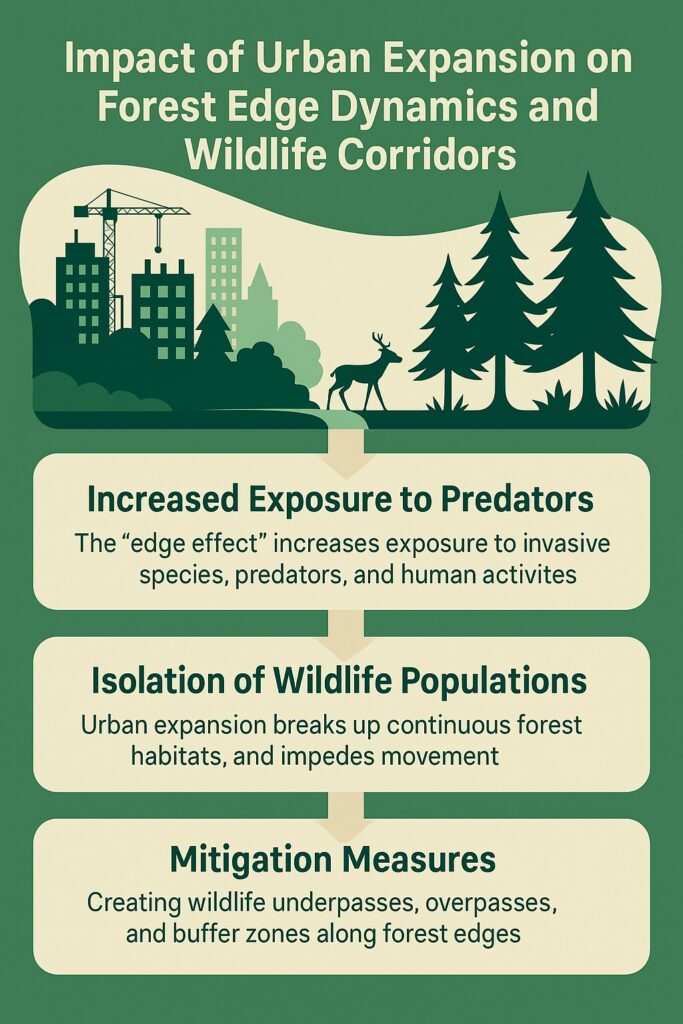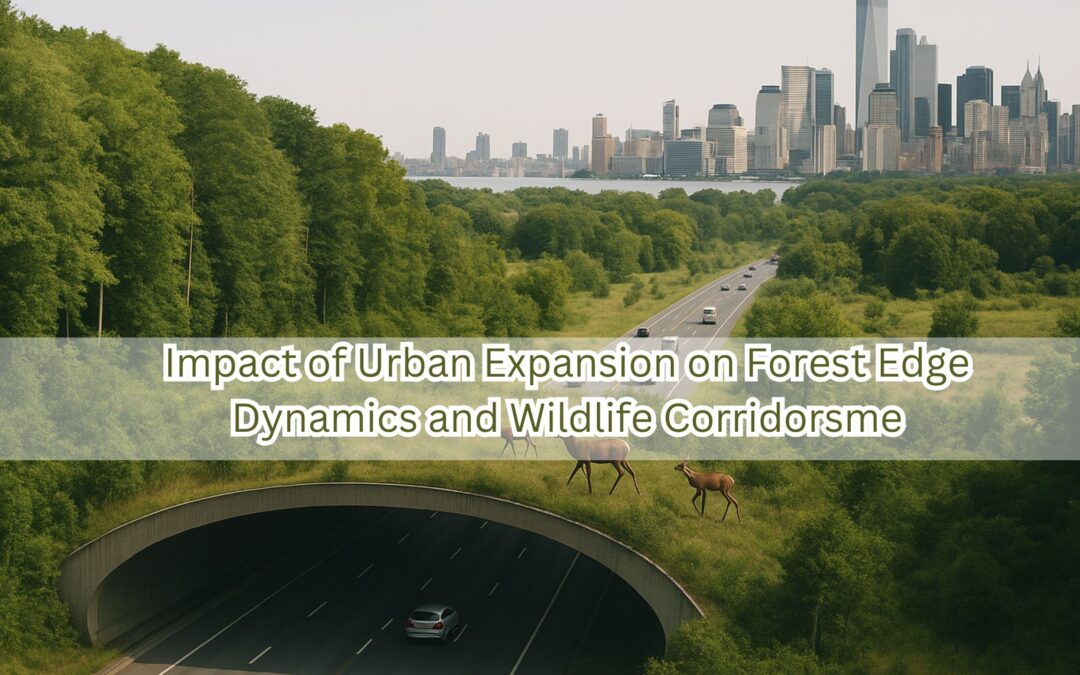As urbanization accelerates across the globe, its impact on surrounding natural ecosystems—especially forests—is becoming increasingly evident. This growth not only consumes land but also introduces serious ecological challenges. Among these challenges, the disruption of wildlife corridors and forest edge dynamics ranks high.
Why Wildlife Corridors Matter in a Rapidly Urbanizing World
To begin with, wildlife corridors play a crucial role in maintaining biodiversity by connecting fragmented habitats. They allow animals to migrate, breed, and access essential resources. However, as cities continue to sprawl, establishing and maintaining these corridors within urban settings is becoming increasingly difficult—largely due to barriers created by private properties, roads, and infrastructure.
Urban Expansion Alters Forest Edge Dynamics and Wildlife Corridors
Urban expansion also profoundly affects forest edge dynamics, the transitional zones between dense forest interiors and open land. As towns and cities grow into previously undeveloped natural areas, they fragment forests and extend the length and complexity of forest edges.
As a result, changes in light, temperature, wind, and humidity alter the microclimate along these edges. These changes, in turn, disrupt plant composition. Typically, species that thrive in disturbed or sunlit conditions move in, while those that prefer the shaded interiors of forests—like certain understory plants—start to decline.

Wildlife Corridors Threatened by Increased Predators and Human Activity
One significant consequence is the “edge effect”. This phenomenon exposes wildlife to increased risks from invasive species, domestic animals, predators, and human disturbances. For example, species such as feral cats and brown-headed cowbirds often thrive near forest edges and urban areas, preying on or parasitizing native wildlife.
Moreover, these areas experience reduced ecosystem services, such as:
- Carbon storage (EPA)
- Soil stabilization
- Nutrient cycling
The cumulative effect is a decrease in overall forest health and biodiversity.
Wildlife Isolation and the Threat of Extinction
Furthermore, as urban development slices through continuous habitats, it isolates wildlife populations. This isolation significantly affects genetic diversity and long-term survival. Species such as black bears, bobcats, and migratory birds are especially vulnerable, as they require large territories or seasonal movement routes.
Unfortunately, barriers like fences, highways, and buildings not only restrict movement but also increase the risk of roadkill and human-wildlife conflicts.
Mitigation Strategies for a Balanced Future
Thankfully, urban planners and conservationists are recognizing the need to address these problems. By designing green infrastructure and implementing thoughtful urban planning, we can reduce the negative impacts of urbanization.
Key strategies include:
- Creating wildlife overpasses and underpasses, like those used in Banff National Park
- Establishing green belts and urban greenways that reconnect fragmented forests
- Implementing buffer zones that reduce edge effects and support climate regulation
These approaches not only support ecological health but also contribute to improved urban livability.
Final Thoughts: Coexistence is Possible
In conclusion, urban expansion presents a major threat to forest ecosystems and wildlife connectivity. However, with conscious planning and effective conservation, we can create cities that support both human and natural communities.
To ensure a future where wildlife and cities can coexist, we must:
- Preserve and restore natural corridors
- Integrate green infrastructure into urban development
- Support policies that prioritize biodiversity (UN Biodiversity)
Join the Movement
If this topic inspires you, we invite you to become part of the Ecolonomics Action Team.
Click here to explore more on forest ecology and urban planning
Be part of a growing global community working to make a little money while making the planet better. Let’s reimagine cities—not as obstacles to nature, but as partners in sustaining life.
References & Related Articles:
- Migratory Birds & Natural Tourist Spots of Bangladesh
- The Power of Keystone Species: Essential Guardians of Forest Ecosystems
- National Geographic – Wildlife Corridors
- U.S. Forest Service – Forest Fragmentation and Edge Effects
- National Park Service – Forest Understory
- Nature – Feral Cats and Biodiversity Loss
- Audubon Society – Brown-headed Cowbird
- U.S. EPA – Benefits of Green Infrastructure
- National Park Service – Black Bears and Wildlife Corridors
- U.S. Fish and Wildlife Service – Human-Wildlife Conflict
- Parks Canada – Banff Wildlife Crossings
- Convention on Biological Diversity (CBD) – Global Biodiversity Framework



